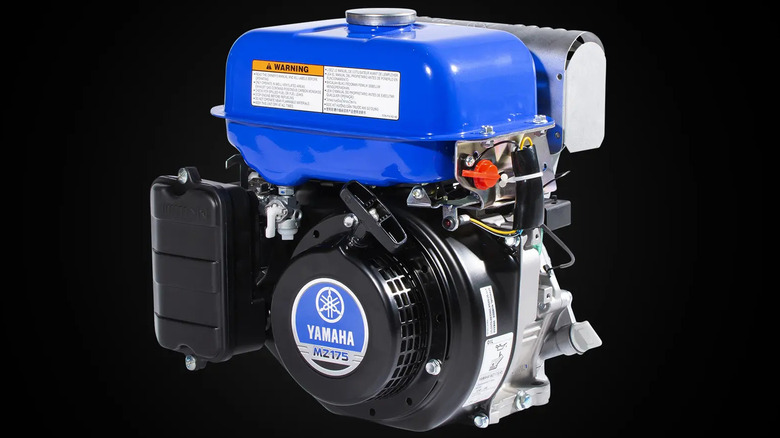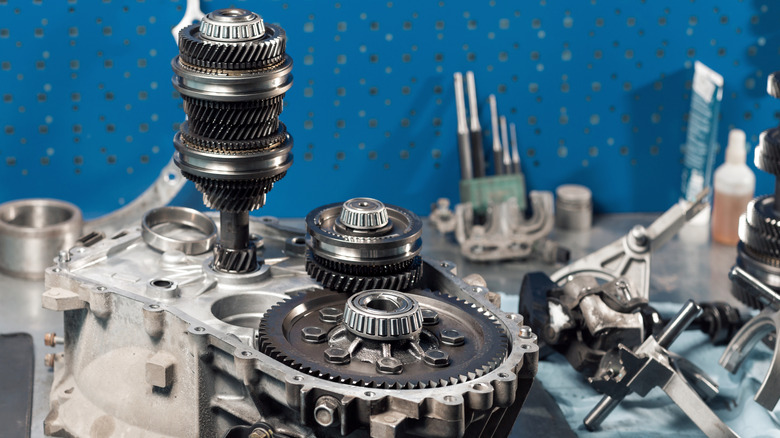Yes, Yamaha Sells Multi Purpose Engines (But Can You Put Them On Your Car?)
Yamaha is known for making great engines across several different platforms, with a solid brand cachet among motorcyclists, boating enthusiasts, and even involvement in Formula 1 engine production. The Japanese brand has been around for decades now, with a good chunk of market share within these respective segments. However, you may not be aware that the company builds multi-purpose engines, which are obviously, built for whichever job you see fit.
With 15 different multi-purpose engines in three lines via Yamaha's EH Series 4-strokes, MX Series 4-strokes, and MZ Series 4-strokes, they offer many solutions. The power ranges from 64cc to 400cc, accommodating a variety of use cases; such as running heavy-duty machinery for agricultural or construction needs, assisting high-performance pumps and air compressors, or driving power generators.
These motors are intended for industrial applications and are meant to withstand the abuses of such environments, withstanding extreme temperatures, dust and debris, and running for extended periods. Customers can browse the line of options and spec an engine to suit their needs, per the torque requirements of specific jobs.
Understanding Yamaha's multi-purpose engines
On the MX and MZ engine lines, there are some clever features. To make mounting these motors easier, Yamaha engineers created "Clean P.T.O. Face" designs to allow for more functionality, where exhaust components are not obstructive. Within the engines themselves, on the MX250, MX300, MX360, and MX400; Yamaha uses "HEMI head" technology and V-valve layouts, giving them optimal combustion chamber geometry and valve angle, which improves efficiency and fuel consumption. Other notable features include offset cylinder bores on the MX360 and MX400, which help reduce friction and heat, potentially extending engine life.
There are multiple options for air filters, depending on use case. The MZ line features a "silent semidry"-style filter for low dust purposes, as well as a "silent dual" option for moderate dust situations like running a harvester. There are also "semi-cyclone" filters for heavy dust, and "semidry"-style filters for general applications. Paper filters and urethane filters combine here to create the perfect matrix for each use case, helping to extend the life of the motors.
Additionally, the MX series features dual-side oil gauges, allowing users easy access for oil changes, as well as an angle-adjustable polymer starter case, ranging from 45 to 60 degrees. These motors also feature microwave-hardened crank and camshafts, as well as patented Stelite and Tufftride metal treatments on the valves for high temperature resistance. Lastly, each motor meets the emission standards in each country it's sold in as well.
Automotive applications for Yamaha's multi-purpose engines are sparse
For those curious about doing a Frankenstein-style shoe-horning of a Yamaha general-purpose motor into a car: While the notion of mixing and matching components and doing engine swaps like the common LS swap offers tuners and enthusiasts the chance to play god, it might not always be advisable. Yamaha-engineered engines have actually found their way into cars, but through more conventional means. While there are surely many such examples of non-automotive motors being used in car applications, there are key concerns to address with that prospect.
Firstly, there will likely be a performance mismatch where the differences in power delivery are apparent. A car or truck application requires a fast throttle response, operating across a wide range of RPMs. Conversely, a general-purpose motor is intended for sustained RPMs under load — think of a power generator running for hours on end. Another challenge would be the installation itself, where the complexities of mounting a motor into an engine bay and the lack of compatibility with the transmission and mounts would pose problems. There would also be a lack of power steering, air conditioning, and electrical systems and sensors that are often relied upon for safe vehicle operation.
The cost of doing such a swap would likely outweigh any perceived advantages. As well, the most important consideration is safety and regulatory issues. While local ordinances may have some leeway for custom powerplants in motor vehicles, that's generally the exception from the norm. For all of these reasons and more, while it may be theoretically possible, we do not advise Yamaha general-purpose motors be put into a car under normal driving circumstances.


